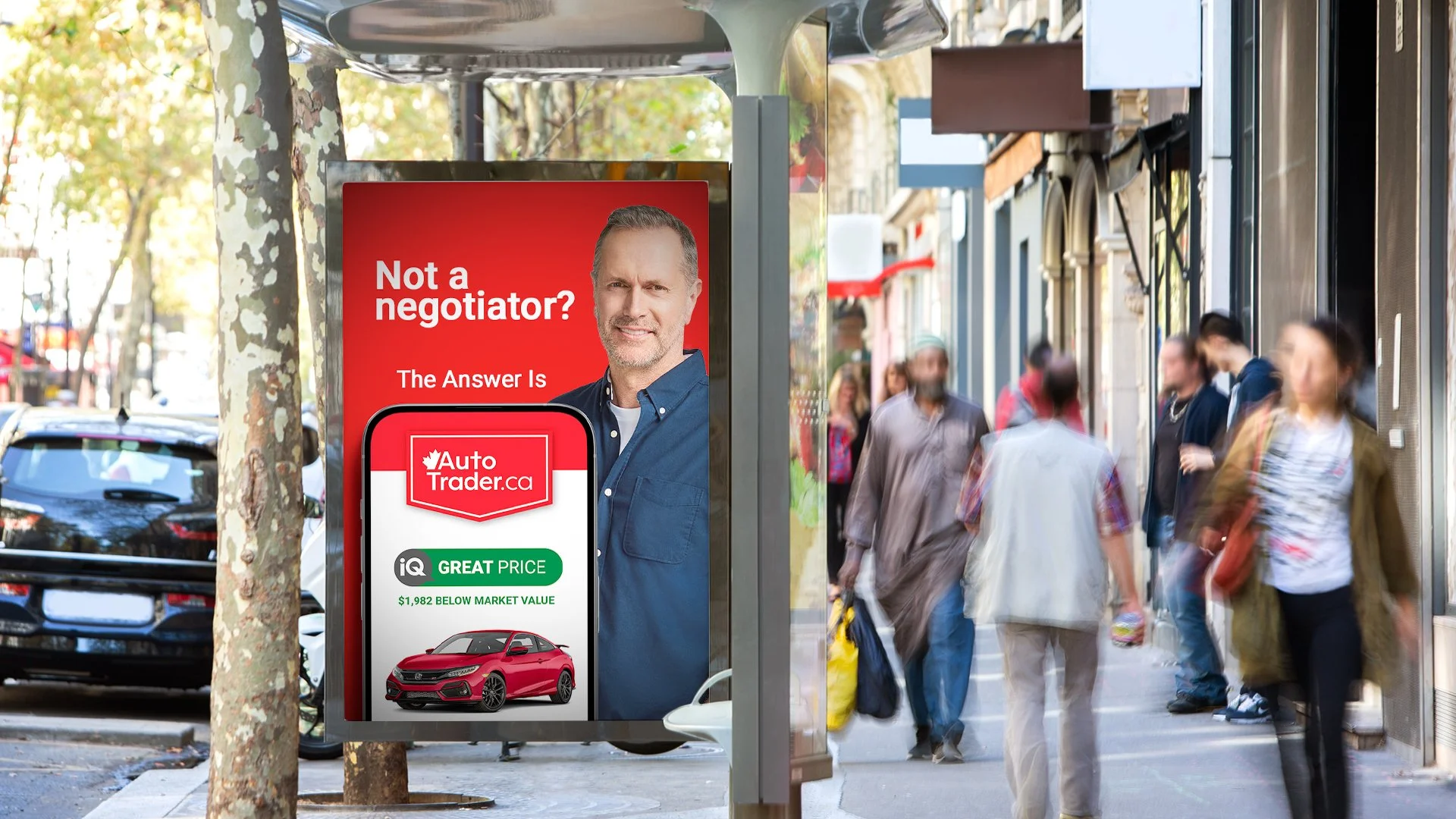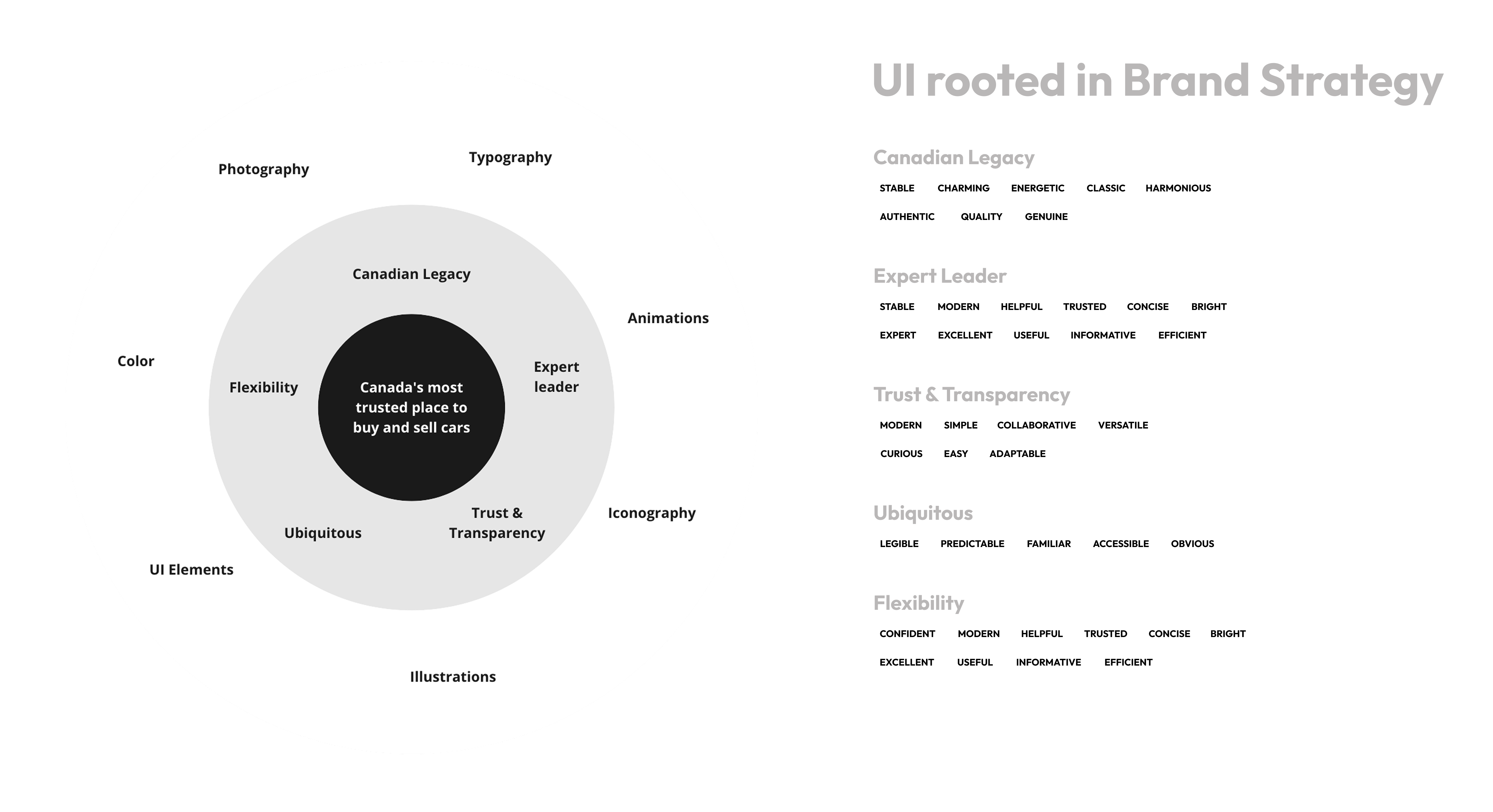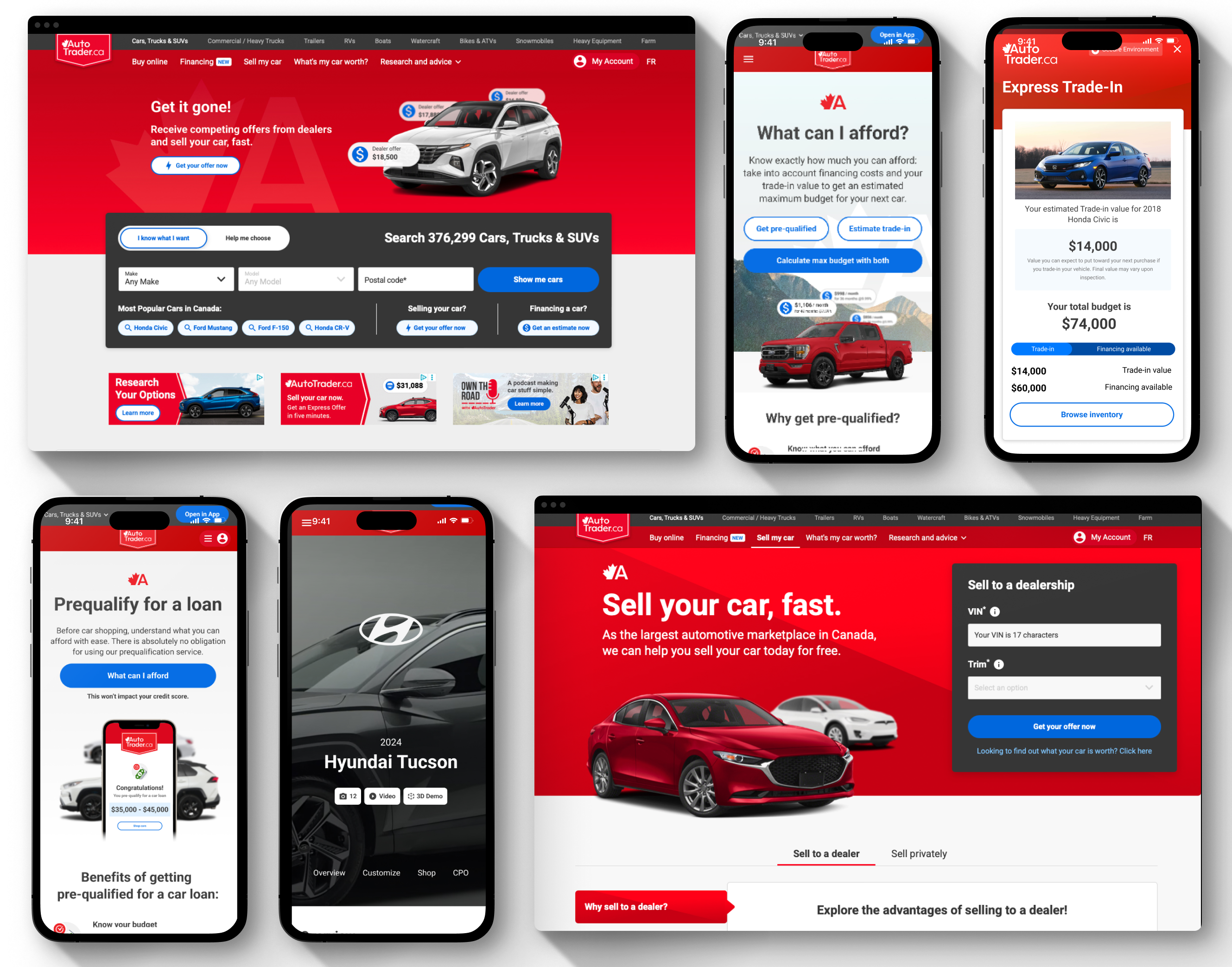
Director, User Experience Design
AutoTrader.ca
2017 - 2024
E-commerce, Automotive, Advertising, B2C, F&I, Data
UX Strategy
Design Leadership
Product Strategy
Culture Design
Business Growth
When I joined AutoTrader in 2017, the company was fresh off a $1.2B acquisition by Thoma Bravo and entering a high-pressure growth phase. The marketplace was fragmented: slow, inconsistent, and frustrating to use. Internally, UX was a shared service buried under technology, focused on visuals, and disconnected from brand, product, and revenue strategy.
As the Director of User Experience Design, my core challenge was to transform UX from a support function into a strategic driver of revenue growth. Over seven years, I led this transformation through three phases: building credibility through data, trust, and collaboration; aligning digital experience with brand and commercial product strategy; protecting existing revenue and creating new commercial opportunities.
This evolution made UX a core business engine, driving increase in revenue, customer retention, and market share. During my tenure, monthly users grew from 16 million to 26 million, NPS scores reached 35+, and AutoTrader captured 62% of the Canadian marketplace segment.
Most importantly, it helped Trader Corp enter the global automotive market - in August 2024, it was acquired by AutoScout24, a leading European automotive marketplace backed by Hellman & Friedman, marking a historical milestone in company’s 50-year history.
I joined AutoTrader in 2017, about a year after the company was acquired by Thoma Bravo for just over $1.2B.
When I arrived, the design team sat under technology and was made up mostly of graphic designers. There was no centralized design system, no user research process, and very little collaboration across departments (or even across designers).
The design team functioned as a shared service; reactive and caught in a battle of prioritization, with no unified vision for the user experience, no brand strategy, and an enormous amount of tech debt.
Externally, the marketplace itself was a mess. Every page looked like it was designed by a different designer (which it was), NPS was in the negatives, U.S.-based competition was gaining market share, performance was slow and buggy, the UX on the marketplace and external marketing assets looked like they belonged to different brands.
To add to the mix, ownership by a private equity company came with pressure to not just sustain revenue, but to grow it year over year (regardless of market conditions or macro economic factors like COVID). With AutoTrader being a classic marketplace, that revenue came from dealerships (what we called “customers”), not Canadian car shoppers (internally known as “consumers”).
This tension created the core challenge: how do you balance the needs of paying customers with needs of consumers actually using the product? Especially, when the two oppose each other.
Fundamentally, the answer was simple:

There were a few of us who prescribed to this philosophy, but bringing the rest of the organization along took years. The key was two-fold: build partnerships and transform how the company used UX design: not as a service, but as a strategy.
PHASE 1 - 2017 - 2021
In my opinion, user experience design is the most powerful tool a business has. It’s the only discipline that sits at the intersection of nearly every other business unit: data, brand, marketing, sales, technology, finance. Coupled with robust tools like wireframes, prototypes, screens, and flows, UX produces concrete deliverables that can be tested quickly. If set up properly, it will give you data and point to where to go next.
To shift perception away from pixel-pushing and "make it pretty" mentality to a core, strategic function, I had to start with the basics: build credibility and trust, gain alignment, change the culture.

To move away from perception that UX is aesthetics, you need to shift the conversation towards how things should work and why. The first thing I did was secure budget approval for proper research and experimentation tools: UserTesting for qualitative research, Lyssna for quick usability testing, GetFeedback for quantitative insights, and Optimizely for multivariate testing.
I introduced a “lean research” framework that helped designers get answers to critical questions fast, changing the perception that research slows things down. It allowed the team to bring data into conversations earlier and iterate with confidence.
For everyone from product owners to C-level, I built reports synthesizing 10,000+ monthly feedback responses into clear insights: behaviour patterns, NPS scores, recurring bugs and their impact, sticky pages, user suggestions, and “before-and-after” metrics tied directly to design decisions.
In 2019, I was asked to take on A/B testing for the entire organization. I created the experimentation framework that defined how we generated hypotheses, pitched them, prioritized ideas against business KPIs, worked with tech to build variants, partnered with analytics to measure outcomes, and made evidence-based decisions at the end of each test. This approach was instrumental in rolling out new designs gradually while protecting core metrics.

Design won’t solve business problems, if you don’t understand the business. To do that, you need to understand P&L and cascading KPIs.
I went beyond what was expected of my role, sitting down with finance and business leads across every revenue channel, learning their metrics, their user segments, their constraints, and their growth plans. Over time, I knew exactly how each metric contributed to annual performance and how we compared against industry benchmarks and competitors.
Using the data tools at our disposal made my team an essential part of decision-making. We became the group that leadership leaned on to surface insights, both qualitative and quantitative.

Whenever I meet someone at work, my underlying assumption is always of a positive nature: everyone is capable, professional, and wants to contribute to the company's success. This mindset lets me approach every scenario as a team effort, not a battle to be won.
So I lend my skills, knowledge, and experience to help us collectively reach the goals we’re accountable for. Sometimes that means closing gaps in others’ skillsets or knowledge; other times, it means asking questions to fill my own. That mix of curiosity and generosity helped me build strong, lasting relationships across every department: product, tech, marketing, sales, operations, and finance.
Over time, those relationships turned into real outcomes. We introduced cross-functional, design-led kickoff workshops that brought product, technology, analytics, marketing, and sales together early, cutting lead times and reducing rework. My team and I became trusted facilitators for complex, high-visibility projects and annual roadmap planning sessions. I was regularly invited to represent user insights at company-wide town halls and external customer-facing sales calls. Eventually, every new leader joining the digital organization met with me as part of their onboarding, to understand how UX worked, and how it could help them make better decisions in their own teams.
“Us vs. them” and “I’m here to advocate for the users” mindsets are dangerous. By now, everyone knows that good user experience is table stakes. My job as a design leader was to shift my team’s mentality from advocacy to partnership.
I spent a lot of time helping designers understand that our role wasn’t to fight for users against the business; it was to work with the business to deliver outcomes that serve both.
That shift required deliberate effort across several areas

1. Educate on business fluency: every designer learned the business model, core KPIs, and performance metrics of the area they supported. I made sure that, as a team, they regularly connected the dots between different parts of the organization and how their product decisions impacted the whole
2. Provide facilitation training: I trained the team on facilitation techniques, conflict resolution, and structured problem-solving frameworks, equipping the team to work with external teams with confidence.
3. Foster autonomy and accountability: I treated my designers as adults: autonomous problem-solvers responsible for their work and their relationships. My job was to remove blockers, provide support and growth opportunities, and challenge them.
4. Create the best environment: If you want to get the most out of your team, it means that they need to have the right tools, the right processes, and feel safe to take risks and make mistakes.
5. Hire for mindset and soft skills: unlike technical skills, certain traits, like resilience, curiosity, empathy, fixer mentality - can’t be taught. Over the years, I developed a framework and a process for hiring the right people based on their mindset and soft skills, which led to creating an incredible team of commercially-fluent, autonomous and growth-focused product designers.
PHASE 2 - 2020 - 2023
By 2020, the UX team had earned credibility. We had data, processes, trust, and executive support. The next challenge was to modernize and transform the user experience of AutoTrader’s marketplace.
The marketplace - across both web and mobile - was a mess. The platform had more than 150 feature requests piled up, and the existing design couldn’t support most of them. Usability issues were everywhere, from forms that wouldn’t submit to pages shifting under ads. Every section looked and behaved differently, with no shared patterns or visual consistency. Although, we were able to shorten lead times, dev-ready designs were still taking too long; primarily, because designers built everything from scratch. Externally, the brand perception didn’t match the intended strategy: in testing, users described AutoTrader as “bonus-happy”, “cheap”, “scammy”, “aggressive”.
Without a separate budget allocated to this work, the key to successful delivery was partnership. To deliver a consistent experience across every brand touchpoint, I partnered closely with marketing department, who owned the brand and advertising strategy. Together, we redesigned core brand assets, completed a full audit of the existing UI, mapped inconsistencies, redesigned the information architecture, and developed scalable components and content patterns - resulting in an enterprise-wide design system called AXLE.

To build and test new changes, we created AXLE Guild, a cross-functional group of developers, designers and delivery leads who advanced the cause within their respective teams. Over the following 3 years, redesign changes were rolled into a commercial roadmap, allowing us to avoid prioritization conflicts. Using Optimizely, we tested every major change through A/B and multivariate experiments to validate improvements and protect KPIs.

The outcome was a platform that finally reflected the strength of the brand. Consistency across product and marketing rebuilt trust and made the experience faster, clearer, and more credible. Core metrics like SERPa, PDPs, and leads volume increased substantially. Brand perception and brand recognition improved. Mobile usage doubled, monthly users grew from 16 million (in 2017) to 26 million (by 2023), and AutoTrader’s market share rose to 62%. Release rollbacks dropped to almost zero, and NPS scores ranged from +25 to +36 across all platforms.
Looking back at this phase, what I’m most proud of is how we did it - not through a top-down initiative or a big rebrand budget, but through a self-organized, cross-department effort led by people who understood the value of a design system and wanted to see it succeed.
PHASE 3 - 2022 - 2024
With a strong foundation in place, we could finally focus on the long-term strategy that went beyond annual reveue goals. We started building 2-and 5-year roadmaps. We could finally focus on innovation and extend AutoTrader beyond buying and selling into the full ownership journey: researching, financing, owning, and reselling. That meant deeper integration of the company’s dealer-facing software, including AutoSync (a group of CRM and DMS platforms acquired and unified under one brand) and Dealertrack, our F&I platform, directly into the marketplace experience.
To do that, we needed a much clearer picture of what our users came to AutoTrader for. Historically, most design and product focus centered on a single job: “I’m here to buy a car.” But users had far more diverse needs, such as I’m here to research the best options, I’m here to understand my budget, I’m here to estimate my trade-in value, I’m here to sell my vehicle, I’m here to stay informed about pricing trends.
By 2022, I was reporting directly to the CMO / CPO, and together we set out to build that understanding using the Jobs to Be Done (JTBD) framework.
Over the course of eight months, we conducted dozens of in-depth interviews, surveyed more than 5,000 AutoTrader users, partnered with third-party analytics firms such as Clarivoy, and ran internal behavioral analyses across existing data sets. The result was the most comprehensive segmentation AutoTrader had ever had; it clearly mapped how many users were in the research, consideration, active-shopping, ownership, and selling phases of their automotive lifecycle.

Coupled with detailed user-journey maps and a full audit of our product portfolio, this work exposed clear commercial opportunities and helped the organization focus our collective effort on these gaps. Based on these insights, I successfully pitched a new product line with an estimated $20M - $50M in annual revenue potential, $2M of which was realized in its pilot year. Beyond the financial impact, this work also gave us confidence in our core product strategy, validating our roadmap and strengthening our long-term integration plans with emerging fintech and data products.

It's hard to believe that, just 20 years earlier, AutoTrader was just a print magazine trying to make its way into the digital world. So when I look back at my almost eight years at AutoTrader, what stands out most isn’t a single product launch or some metrics, but the fact that we were able to transform the business, dominate the Canadian market, and get it ready to enter the global stage. In August 2024, Trader Corp was acquired by AutoScout24, a leading European automotive marketplace backed by Hellman & Friedman.
What I've built is an incredible team of commercially-fluent, autonomous and growth-focused product designers; robust systems and processes; and a segmentation framework that can be scaled to any market, of any size.